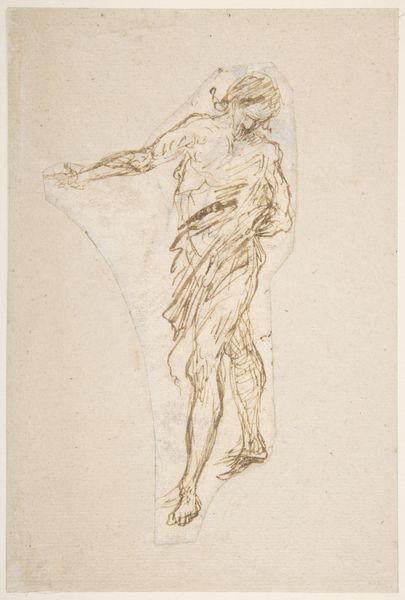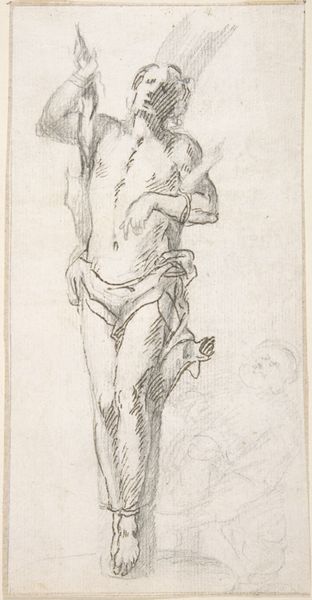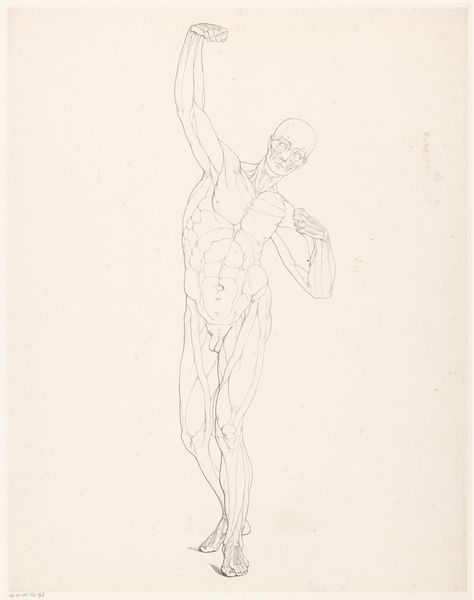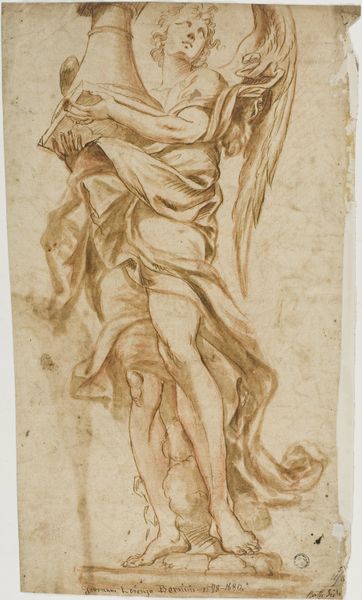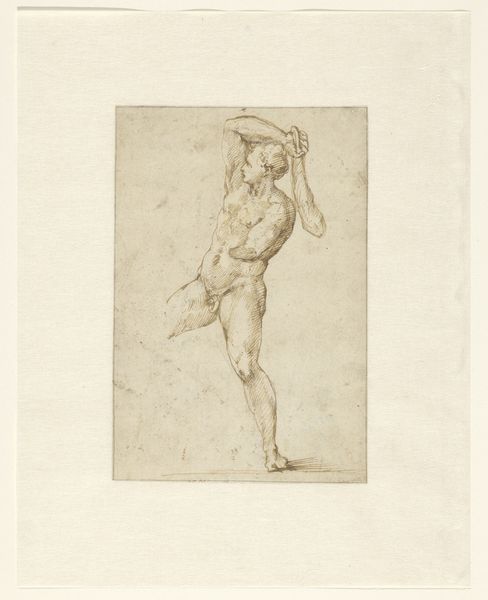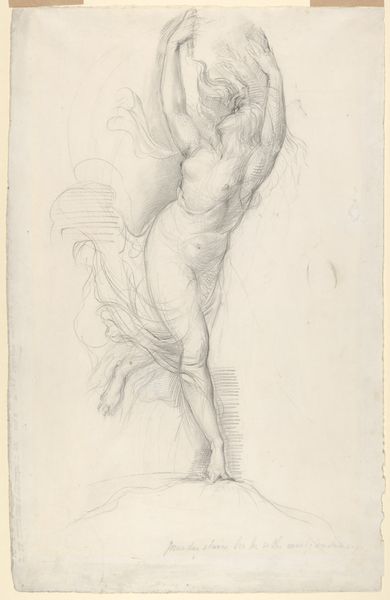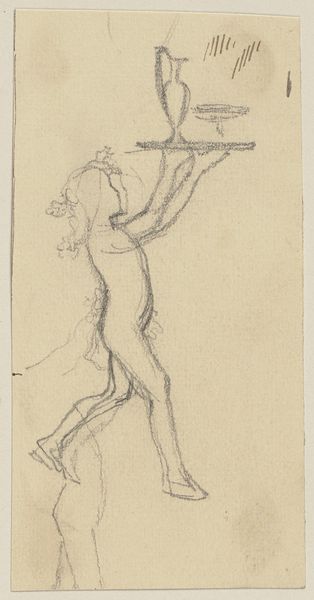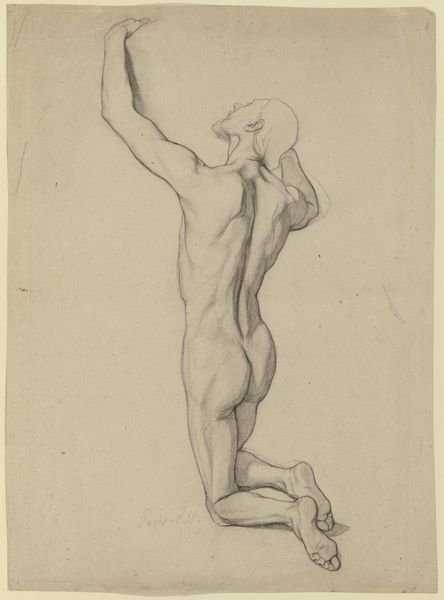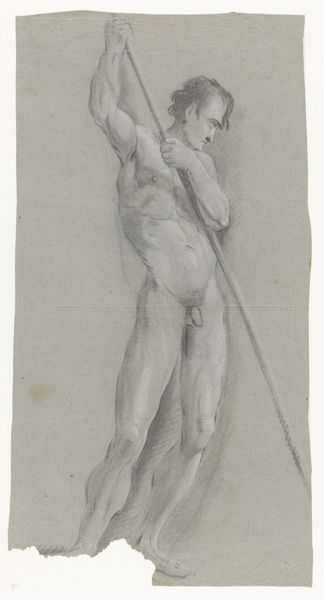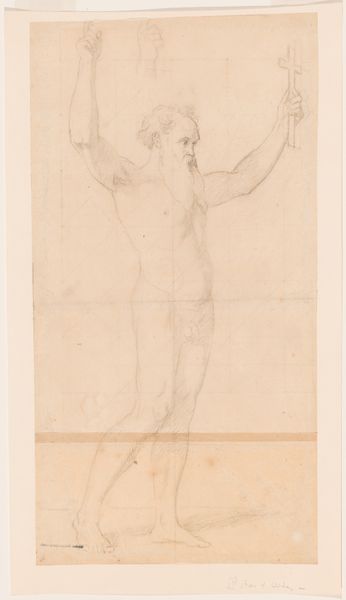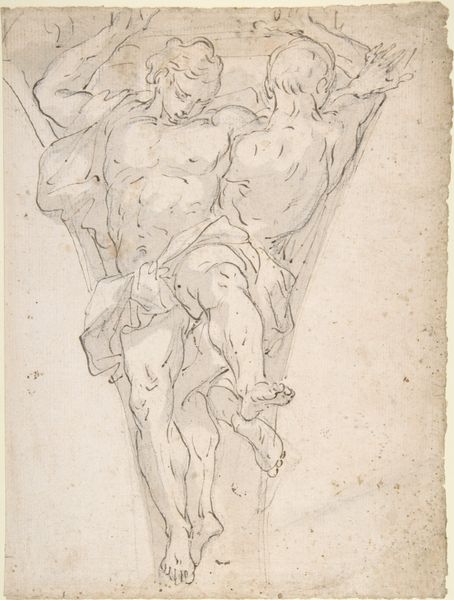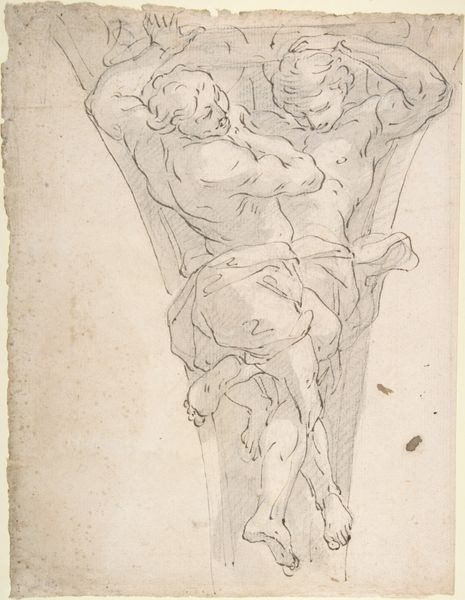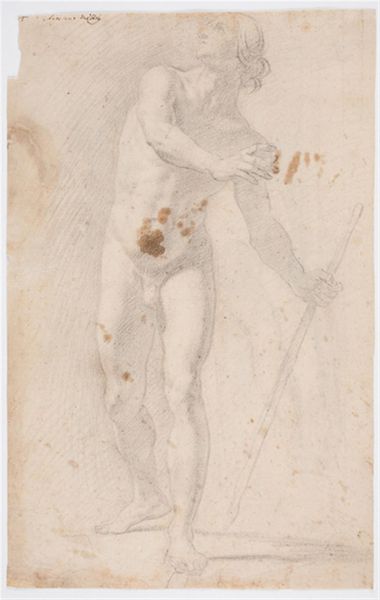
drawing, ink, chalk
#
drawing
#
baroque
#
figuration
#
ink
#
chalk
#
15_18th-century
#
history-painting
#
nude
Copyright: Public Domain
Curator: This striking drawing, made with chalk and ink, is Johann Andreas Wolff's "The evil thieves", dating from 1712. It's currently held in the Städel Museum. What's your initial impression? Editor: It's a raw and unflinching depiction. The artist's lines convey the weight of agony in a profoundly physical and, dare I say, unsettling way. It feels intensely vulnerable, a visual assault. Curator: Given the period, such intense and graphic depictions were quite common as tools of religious instruction and to reaffirm social order. Religious art during the Baroque era sought to inspire fervor but also enforce power. Editor: Absolutely. But it's not merely about religious power, is it? Who are the thieves mentioned in the title? We need to think about who benefits when those already marginalized are further subjugated. Consider the cultural moment; what discourses of class and power were at play that gave rise to such art? It's not only Christ's suffering but also a societal sanction of it. Curator: That's an important point, to connect the historical moment with the sociopolitical. Wolff, trained in Augsburg and active throughout Southern Germany, existed within a landscape rife with religious and social upheaval. Such images reinforced a hierarchy and a system of control through visual and emotional manipulation. The Baroque loved dramatic tension! Editor: True, but looking at this through a contemporary lens, the "evil thieves" seem to represent anyone challenging authority or the status quo. It brings up the history of marginalization—the countless unnamed people condemned and erased from collective memory throughout history, their stories lost to those with power. Curator: It does invite questions about victimhood and agency. We should ask ourselves about the role imagery like this plays in shaping historical memory and in justifying unequal structures. Editor: It demands that we do, reminding us that art, no matter its age, is not neutral. It can be an instrument of either oppression or empowerment depending on whose gaze informs its interpretation. Curator: Well, by examining both its art-historical context and its potential contemporary resonances, perhaps we can promote more historically informed perspectives. Editor: And hopefully encourage us all to be more critically engaged viewers. Thank you.
Comments
No comments
Be the first to comment and join the conversation on the ultimate creative platform.
